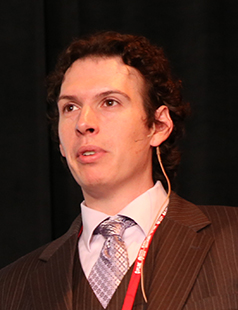Austin P. Tucker
AVP, PI Risk Services, Global Risk Solutions
QBE North America
Parker, COPh: 469-233-9606www.qbena.comInfrared Reflectography Analysis
Abstract
The uses of Infrared thermography are numerous and well known to most: preventive maintenance, moisture intrusion, animal husbandry, and more. However, one area that is often overlooked is the use of infrared thermography in the use of art analysis. For years, paintings have been analyzed using x-ray technology to look through paintings of some of the masters of the craft. In this paper we will look at why infrared technology is being used to analyze paintings, how the process has been done, and we will look at some of the findings from these scans and how the results have changed the way we look at these master works.
Introduction
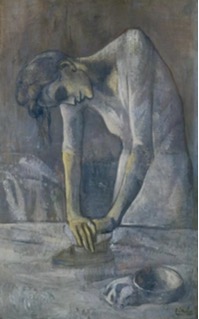
In 1989, restorationists at the Guggenheim Museum in New York City began a project to restore the painting “Woman Ironing” (La repasseuse) by Pablo Picasso. This 1904 painting from the end of Picasso’s Blue period (1901-04) depicts a Parisian laundress toiling over her work in the abstract style that would define Picasso’s career.
During the restoration process, it was revealed that this painting had covered up the painting of a portrait of a man. Due to the limiting technology of the day, the details and composition of the covered painting hindered on who is depicted in the portrait and what it looked like before Picasso painted over it. Moving to the present day, the advances in imaging technology and color spectroscopy have allowed the now hidden image to reveal itself, colors and all.
In this paper, I will explore the technique of infrared thermography and its application to art history and restoration. I will explore the other infrared options: near-infrared and in brief but the focus of this paper will be the use of infrared thermography, called infrared reflectography and how it is used. I will walk through how a work of art is prepped and photographed for research purposes and, finally, I will show how IRR is used by historians and its advantages as well as its limitations.
Infrared Reflectography Analysis Discussion
Why Infrared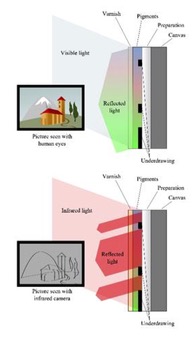 Infrared and Art, called Infrared Reflectography by art conservators, can be applied to paintings on various mediums to reveal the under layers in a non-destructive manner. The conservator is looking for underdrawings (the outline drawn by the artist as a guide) to see whether the visible layers of paint differ from the underdrawing or layers in between. Such alterations are called pentimenti when made by the original artist. This process often reveals the artist’s use of carbon black, which absorbs and emits infrared radiation efficiently and therefore shows well in reflectography. In general, the more pentimenti the more likely a painting is to be the prime version. It also gives useful insights into the working practices of an artist.
Infrared and Art, called Infrared Reflectography by art conservators, can be applied to paintings on various mediums to reveal the under layers in a non-destructive manner. The conservator is looking for underdrawings (the outline drawn by the artist as a guide) to see whether the visible layers of paint differ from the underdrawing or layers in between. Such alterations are called pentimenti when made by the original artist. This process often reveals the artist’s use of carbon black, which absorbs and emits infrared radiation efficiently and therefore shows well in reflectography. In general, the more pentimenti the more likely a painting is to be the prime version. It also gives useful insights into the working practices of an artist.
Art conservators use infrared for many purposes such as looking to see whether the visible layers of paint differ from the underdrawing or layers in between – such alterations are called pentimenti when made by the original artist. This information is useful in deciding whether a painting is an original version by the original artist or a copy. Conservators are also looking to see whether it has been altered by restoration work which can aid in the preservation of the painting.
How Infrared us Used
In the world of art conservatory, the power of thermography has been known since the 1960s when J.R.J. van Asperen de Boer proposed near-infrared inspections of art. The near-infrared range of .7 to 2.5nm is that range in which the pigments in paint become invisible and the underlayment of a painting can be seen.
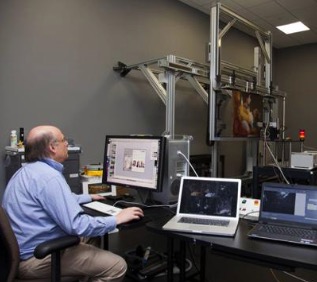
In the research paper “Infrared Methods in Noninvasive Inspection of Artwork”, the authors used a filament lamp and a FujiFilm FinePix S3 Pro UVIR camera to examine an oil painting on canvas that was intentionally altered to push the boundaries of the technique. As shown in the photos below, the “faked” signature was easily detected with the near-infrared spectrum as well as alterations to the painting.
Also mentioned in the “Infrared Methods” paper: the use of pulsed phase thermography. This process-which is commonly used on industrial materials of metal, plastics, and composites – is used to determine depth (thickness) of a material
measuring heat diffusion with the formula in Fourier’s Law. To achieve this result, the subject material is subjected to a short heat pulse then examined using a thermal camera at certain points with data collected over a specific period. Once the data are gathered, the information is used to compile a three-dimensional array of thermal data.
While the information gathered in the “Infrared Methods” paper is interesting, its complexity and steep learning curve make it less likely to see future adoption when compared to the aforementioned near-infrared and infrared thermography.
Infrared thermography (IR) covers the spectrum of 3 to 14 nm and gathers information from a painting by exposing it to an infrared source and documenting the heat exchange pattern. By exposing a painting to a heat source, the materials in the paint absorb and release heat at a different rate allowing for analysis of the subsurface and the materials underneath the paint.
A common issue with IR is the length of time in the heat source exposure; obvious thicker materials (wood and metal) can be subject to longer exposures to a heat source which allows for a longer time to study the heat exchanges. On canvas paintings, prolonged heat exposure can damage a painting so alternative solutions must be found. One possible solution is heated flashes where a quick powerful flash from a bulb which significantly reduces the exposure of paint to a heat source. However, this method only allows a small window, 0.1 – 0.5 seconds, to read the temperature differential. The IRT process is best at finding delamination areas and areas of restoration.
The side benefit to the infrared process is that the underdrawings and sketches are easily visible when done out of charcoal or graphite which easily absorb infrared light. The remainder of this paper will focus on this aspect of IR use and its notable findings in the past 20 years.
Equipment for Infrared Art Analysis
Camera
To a knowledgeable person who is acquainted with thermography, they will think of the cameras of FLIR, Fluke, or other infrared camera manufacturers. However, as shown in a number of studies and papers, most art restoration projects use normal digital cameras that are either outfitted from the manufacturer as infrared capable (the previously mentioned FujiFilm FinePix S3 Pro UVIR) or a normal digital camera that has been modified to a “full spectrum” camera.
A “full spectrum” camera is one that has the factory installed IR cut-off feature which can be removed by either the very brave consumer or a professional camera repair store. Once removed, the camera can operate across the full spectrum of light including ultraviolet and multispectral imaging.
Once a camera is capable of full-spectrum capabilities, an infrared filter needs to narrow down what the viewer is seeing. Per the paper “Infrared Technical Photography for Art Examination”, author Antonio Cosentino points out that “[t]he only filter recommended for studies of pigments in 1000 nm filter, since pigments become more transparent at higher infrared wavelengths.”
Cosentino also recommends using a digital camera that is hooked up to a computer to provide sharper focus in a live-view mode and to use a color check palette before each use since color capture can vary from camera to camera. In his paper, Cosentino used a Nikon D800 DSLR camera with a 36-megapixel capacity that had been modified to a full spectrum capability (~360 – 1100 nm) which was calibrated to the X-rite ColorChecker Passport.
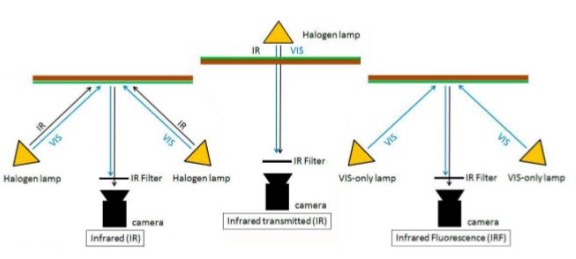
The most effective light source for IRT is a halogen lamp that provides enough infrared energy when heating is not a concern. However, as mentioned earlier, a canvas artwork will not hold up to prolonged heat exposure so alternative methods need to be found. LEDs and flash (strobe) lights are suitable alternatives to the halogen bulb. According to Cosentino, an LED that emits a wavelength of 940 nm is preferred since it can “reach to the edge of the full spectrum camera sensitivity in the infrared region and allow the user to take advantage of increased transparency of pigments.” It is worth noting that the LEDs mentioned in Cosentino’s paper are infrared LEDs and not the typical white light LEDs since the white light version has a significantly smaller infrared range and power.
Flash lights (strobe) are preferred when rapid light deployment is needed but the relatively low power of the device is not enough for large objects and the exposure of the light from the flash light may be powerful enough to achieve illumination. Cosentino recommends that any flash light set up be as large as the subject being examined.
Image Taking
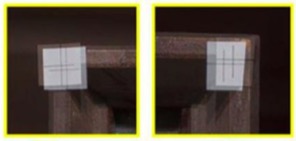
light bends in a particular spectrum.
As mentioned before, it is recommended that a check of color calibration and computer- based image taking be used when examining a painting. Another obvious check is to have the camera stationary and do not move it during the photography and thermography portions of the examination.
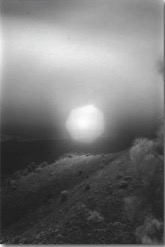
The reason is that the image will appear to be offset when taken in the infrared and ultraviolet spectrums due to the bending of the light and its optical path into the camera lens. This also means a refocus of the lens is necessary when going from visual light to infrared / ultraviolet light or vice versa. In imaging science, this process of aligning images from different spectrums is called “Registration” with the visual light photograph being the template and all other spectrum images are to be over-lay on that image.
To assist with these discrepancies, a thermographer has several options: manual refocus and alignment, the use of stickers with carbon-based inks, or apochromatic lenses which bend the light spectrum to the same standard.
Another issue associated with full spectrum photography is with hot spots. These spots are circles at the center of an infrared image that is bright enough to distort an IR image. Hot spots can be caused by several factors involving the camera lens itself: the coating inside the lens barrel, the lens elements, or interactions between the image sensor in the camera and the lens elements.
Types of Infrared Reflectography Techniques
Infrared
This technique uses two or more halogen lamps to project both visible and infrared light onto the painting’s surface where the infrared light is absorbed by the underlayment pigments and drawings. Per Antonio Cosentino, the goal is “the contrast between a bright and reflective ground layer and the drawing made with ink or paint which absorbs the infrared, such as a carbon-based pigment.” However, if the drawing is done with a material that does not absorb infrared, then it will not be detected.
Infrared works best when combined with other techniques to create a more holistic view of the painting. Both visual and infrared images can be combined to see how the underdrawing relates to the final painting as well as authenticity checks (to see if this is the original work by the artist of a well-conceived copy).
Infrared Transmitted
This technique involves placing a halogen lamp behind a translucent object (paper, canvas, parchment, etc.) while the infrared camera is placed in front of the object. This method allows for almost all infrared energy to be absorbed by the canvas. This method offers the best view of the underdrawing and reduces reflection potential from white paints.
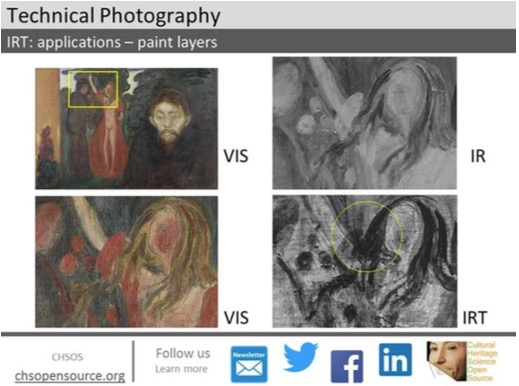
black drawing in the IRT box when compared to the IR image which is illuminated from the front.
Infrared Fluorescence
This method of infrared thermography uses a fluorescence light that allows certain mineral elements to exhibit infrared fluorescence. This process is similar to ultraviolet light causing visible light occurrence (i.e. bio-luminous flora and fauna). Certain historic pigments exhibit infrared fluorescence and low nanometer infrared light (700-800 nm) and special filters on a camera are used to locate these colors.
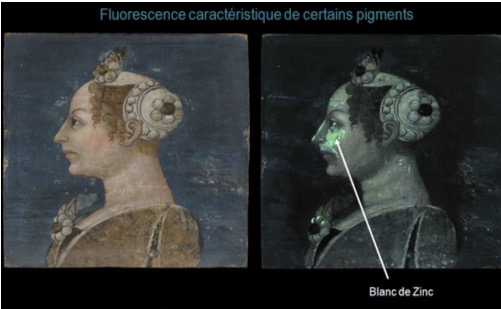
These “historic” colors are defined as follows:
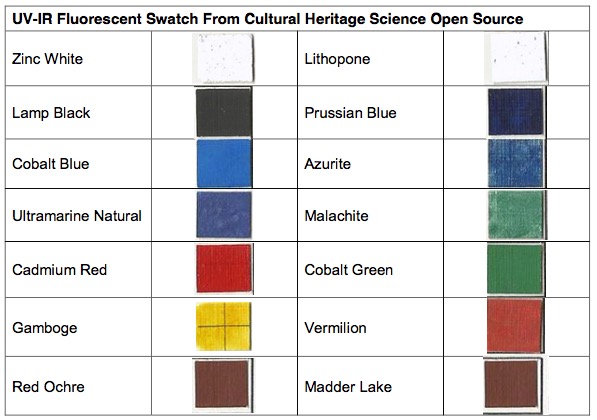
Conclusion
As infrared becomes more accepted in the mainstream with lower priced equipment and increasing knowledge base, infrared thermography will gain more acceptance in the conservatory world. Currently most interest lies in the conservation and academic realms but public interest will increase as more discoveries are made through the use of infrared.
Will we someday see infrared images of masterworks hung next to the actual masterpiece? Probably not in that context but as augmented reality continues to infiltrate our lives and electronic devices, it is possible that we will see these types of images integrated into interactive tours of galleries soon.
Image Examples
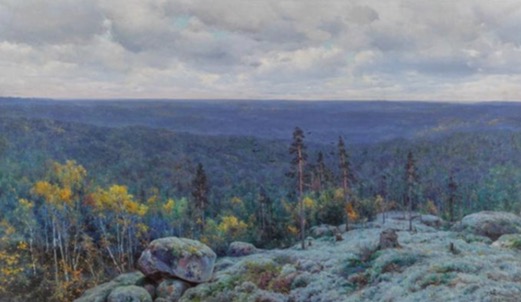
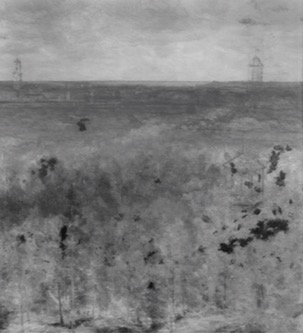
Kryzhisky, Wooded Landscape
“Konstantin Kryzhitsky’s Wooded Landscape. Just visible to the naked eye are the ghostly outlines of domes and towers on the horizon line hinting at an underlying composition. In the infrared reflectogram, using infrared reflectography, the distant cityscape appears to be drawn in a dry medium, probably graphite, and is accompanied by dry, ruled lines executed in the same medium to set out the horizon line. There is also evidence that the artist had begun to paint elements of a cityscape before the composition was reimagined and overpainted. The architectural clues seem to suggest that the abandoned composition depicted one of the Volga towns, most likely Yurevets.”
– C. Larkin – The Infrared Technology Revealing the Hidden Secrets of Paintings, May 24, 2017
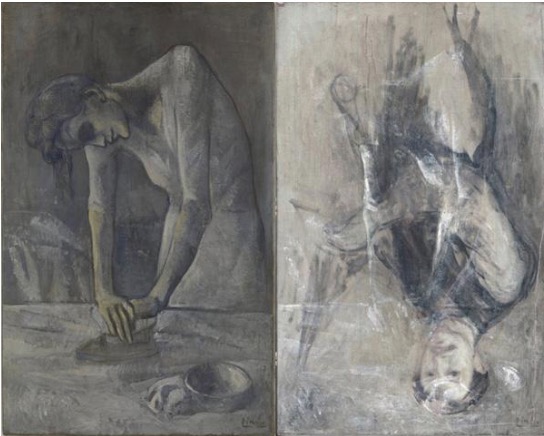
[T]here is more to this painting than the evocative portrait of a Parisian laundress. A study of Woman Ironing completed in 1989 revealed an apparent portrait of a man beneath the surface of the 1904 composition. Technological limitations prevented further discovery about the underlying portrait until recently, when developments in imaging techniques allowed researchers to see it with greater clarity.
The Guggenheim Conservation Department conducted an in-depth, scholarly study of the earlier portrait, incorporating advanced imaging techniques as well as chemical analysis of pigments and historical research. The results obtained a better visualization of the underlying male subject and enhanced existing scholarship on Picasso’s working methods and materials. Conservation treatment of the painting was a central component of the project, and comprised overall cleaning, stabilization, and editing of old and mismatched restorations.
– Guggenheim Museum, “Picasso’s Woman Ironing” https://www.guggenheim.org/ conservation/picassos-woman-ironing
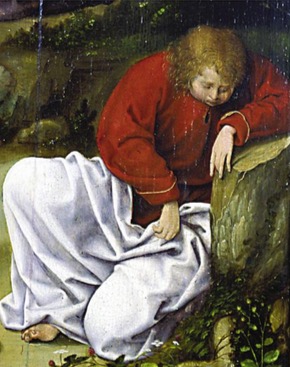
an altarpiece wing, Warsaw, Museum Naradowe
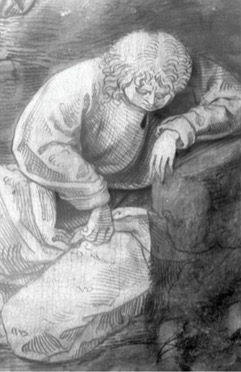
(Molly Faries, Scientific Examination of Art: Modern Techniques in Conservation and Analysis (2005)

